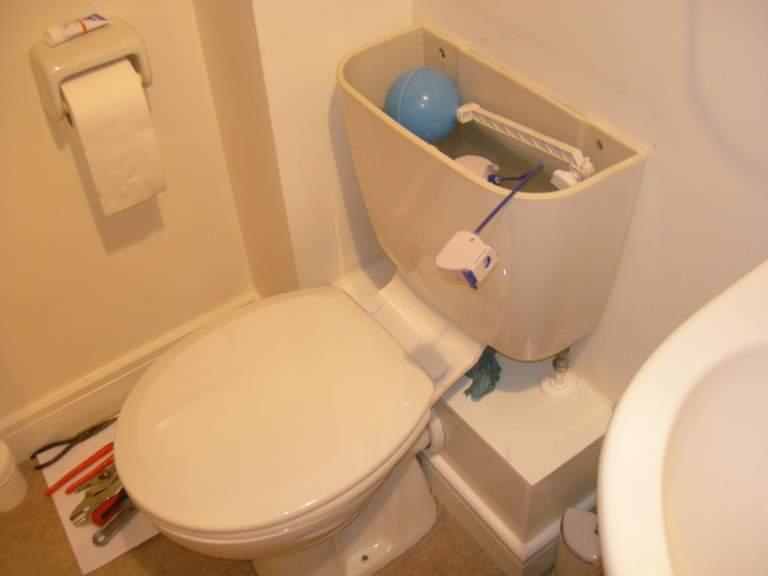Thanks Rob. Sadly the nightmare continues – I hadn't read your detailed solution when I got back and had another go. I was passing B&Q, and found that they had doughnut kits which looked as if they might fit, and were cheap, so I bought one. My God – it fitted, and seems to be sealing!
But… somehow it must have moved the cistern slightly, so the water inlet pipe wouldn't quite line up with the plastic threaded bit of the inlet valve. But it was very very close, so I kept trying it, and eventually it seemed to be going on.
Of course, it was slightly cross threaded, and ruined the plastic threads on the valve, so it leaked. Fortunately, I'd bought a kit of flush AND inlet valves (the inlet valve was supposed to replace a leaking one elsewhere), so there was nothing else for it but to use the new valve.
http://www.screwfix.com/p/fluidmaster-button-cable-dual-flush-bottom-inlet/58353
But the nightmare continued. The Fluidmaster instructions told me to raise the height of the inlet valve so that its critical level mark was at least one inch above the overflow pipe. That wasn't possible – at that height, the lid wouldn’t go back on the cistern. So I set it as high as I could.
It also said it was essential to remove the cap on the very top of the assembly, and turn the water on, to flush any debris out of the valve. Following their instructions very carefully (lift lever, press the cap down, turn clockwise and the cap comes off), I spent about 20 minutes trying to get the cap off – quite impossible.
Eventually, I lost my temper and prised it off with a screwdriver – this revealed two things: (1) unless I’m completely insane, it is impossible to rotate the cap, due to the way it's fixed in place; (2) when you DO remove it, and turn the water on, the water comes out near the bottom of the valve somewhere – exactly the same as it does with cap on, so I can't see the point in removing it.
So I filled the cistern – or at least, I tried to, but the water reached the overflow before the inlet valve stopped the water coming in, so it just ran and ran. I can only think that the appallingly bad Fluidmaster instructions were wrong, and that the overflow pipe should be an inch ABOVE the inlet valve, not an inch below??? I took everything apart for the 40th time, and changed it to that – now it fills then cuts off as it should.
Finally – I filled and flushed several times, and all seemed well… until I noticed a drip coming from the plastic nut which seals the inlet valve to the cistern. I’ve tightened it up even more, and it seems to have stopped… for now?
Oh – did I say “finally”? Noooo… the dual flush doesn’t. Whether you try to push the little button (impossible unless you have subminiature fingertips), or push the whole big one, you get a short flush – understandable, as there's only one plastic rod that pushes down, whatever you press. So I don't know how that’s supposed to work.
Oh yes – and the new inlet valve positions itself exactly in front of one of the holes in the back of the cistern where the screw is supposed to go through to the wall. I hadn't put the screw in yet, as up to now the tank had needed a fair bit of wiggling while trying to line things up.
I think words like “nightmare” are overused, but I’ve spent something like 4 stressful hours on this, made a hell of a mess, it still doesn't work properly, and I have no confidence it won't suddenly spring a leak in the middle of the night and flood the house.
I’m a computer engineer – although I don’t know a lot about plumbing (as is clear) I do know how to work carefully and logically, and I can happily fix cars and domestic appliances, re-wire things, do minor building, carpentry etc. But this has defeated me completely.
Nothing fits; instructions are wrong; valves and things don’t work in the way they should etc etc etc.
Never again. Maybe these things are best left to the professionals.
But thanks again for all your help





